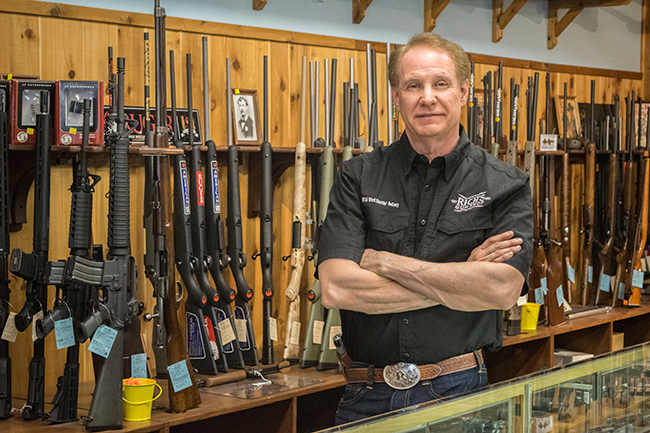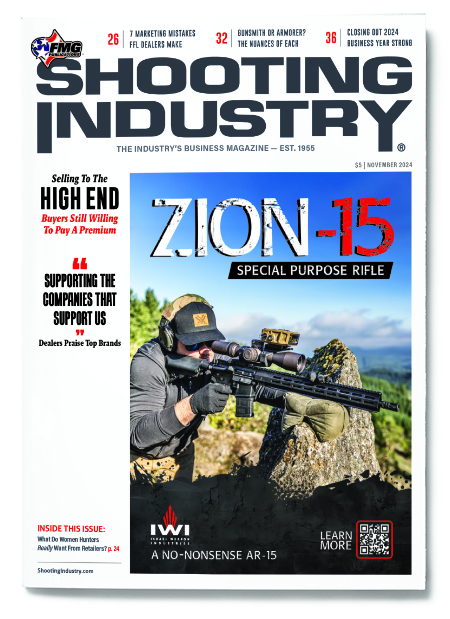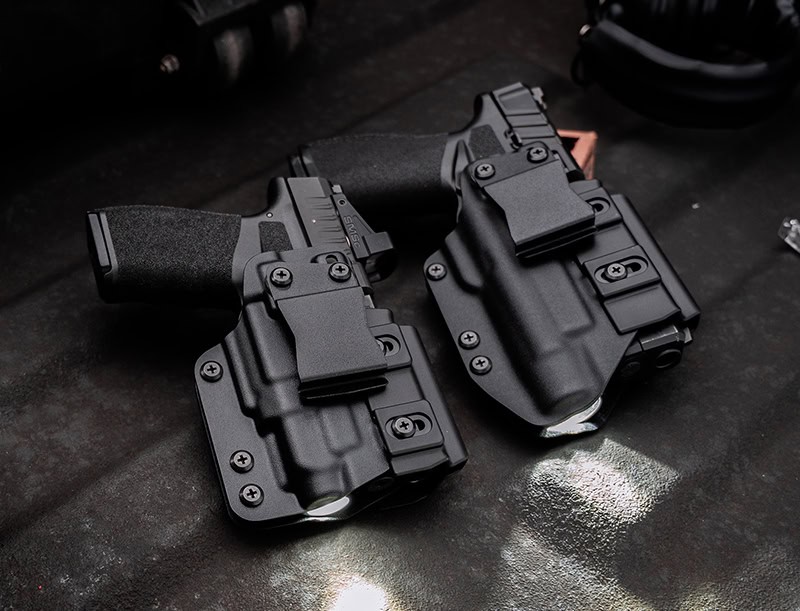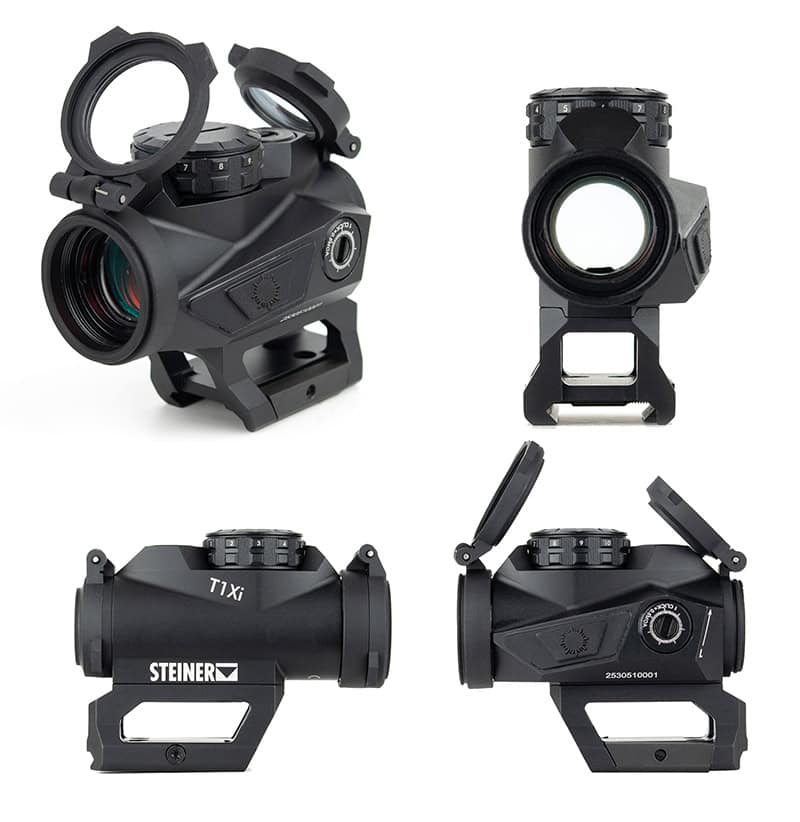3 Takeaways From Updated First-Time Gun Buyers Report
One of the defining characteristics of “The Surge” from 2020–2022 was the millions of first-time gun buyers who swarmed gun stores across the country — eager to gain some sense of safety for themselves and loved ones. This demand surge may be a distant memory now, but it brought lasting changes in the market and how the industry engages with end users.
NSSF recently published an update to its First-Time Gun Buyers report. The 2024 edition of the First-Time Gun Buyers report is based on a study of consumers who purchased their first firearm in 2021–2024. (This is the third iteration of the First-Time Gun Buyers study, as there have been some notable shifts in consumer behavior since 2020.)
The study was conducted by InfoManiacs Inc. to obtain current information regarding behaviors and interests in this segment of the firearms market and to determine differences in purchase motivations and behaviors between 2021 and 2024. It also showcases subsequent purchases, training and habits of first-time gun buyers.
There are dozens of unique takeaways from the full 54-page report, but we’ve whittled it down to three for you to share with your sales teams.
1. What’s Most Important
Summarizing the study, InfoManiacs Inc. President Laura Kippen, Ph.D., keyed in on what factors are the most desirable for these first-time gun buyers.
“Practicality, fit, quality and value top the list of reasons first-time buyers selected the specific gun for their first purchase,” she said. “The brand, style, power and features and options are all secondary considerations. Other peoples’ opinions — including those of friends and family and sales personnel are important — but secondary relative to buyers’ perceptions of quality, fit and value.”
She continued, “Features such as look and feel, collectability, color/finish, and uniqueness had little impact on the selection of a first gun. These features may play a more important role if new gun buyers decide to make additional purchases.”
As noted in conversations with dealers and manufacturers alike, first-time buyers in 2020 didn’t have an opportunity to be loyal to a particular brand — they often bought what was in stock. Looking at 2021–2024, inventory levels improved over 2020 but rather than focusing on a particular brand, these customers desired attributes like fit and value — which is where your store’s staff come in, and leads us to our next takeaway.
2. Your Presence & Opinion Matter
The report revealed some encouraging trends for independent dealers: 41% of respondents purchased their firearm at a local gun store, 30.6% at a big-box retailer and 8.4% purchased through an online retailer.
The vast majority of respondents (more than 90%) purchased one or more accessories for their first firearm, as well. (Which you already know: Accessory sales offer supercharged margins.) Gun-cleaning products were the most popular. Gun storage was a particular growth point, too.
Additionally, the voice of the sales rep behind the counter matters to these buyers — gun shop personnel were listed as the second most sought-after source of information to help with their gun-buying decision (family members were first, friends were third).
This trend reinforces the importance of local gun stores. As an independent dealer, your opinion carries weight with customers.
If your staff can identify the best handgun/rifle/shotgun to match a customer’s preferences and needs, you’re one step ahead of the competition who is unable (or unwilling) to accommodate this shift in customer buying preferences. Simply, sales rep demeanor and the ability to make customers feel comfortable (and welcome) goes a long way.
3. Leaving Money On The Table
When it comes to profit centers, training is often a must-have for a vibrant retail store or range facility. In the October issue, Massad Ayoob interviewed PAC Range’s (Mandeville, La.) General Manager Christian Paille, who shared the majority of the facility’s training profits come from after-class sales — as opposed to tuition.
“[Students] often buy their training ammo from us. Before they leave, they might buy some carry loads the instructor recommended,” he said. “A lot of beginning students will come with suboptimal guns, suboptimal holsters and suboptimal belts. We have much better equipment we can rent to them, which they realize as soon as they use it. They buy those things, or similar guns and gear from us before they leave or shortly thereafter.”
This report revealed a significant decrease in first-time buyers receiving formal training from instructors. In 2020, nearly half of respondents (46.3%) paid a professional. This updated study revealed under a third (30.1%) did the same in 2021–2024. Alarmingly, nearly half of the respondents in this latest study were not offered training at the point of purchase from the retailer. This is the definition of leaving money on the table.
Kippen highlighted this in her executive summary of the report.
“Not only is training essential to learn how to safely use and maintain firearms, but it is also correlated with spend on and enjoyment of firearms,” she said. “It must be emphasized training should be offered to new gun owners either on site or through relationships with other retailers and gun ranges.”
A Drop In The Bucket
These three takeaways are a drop in the proverbial bucket when looking at the full report, available for purchase to NSSF members on the NSSF’s online research store.
Other data points highlighted in this report include information on these buyers’ preferred participation in shooting activities, hunting insights, attitudes pertaining to gun ownership, demographic breakdowns (including by sex, age, income, etc.) and more.
For more info: nssf.org, imaniacs.com.





